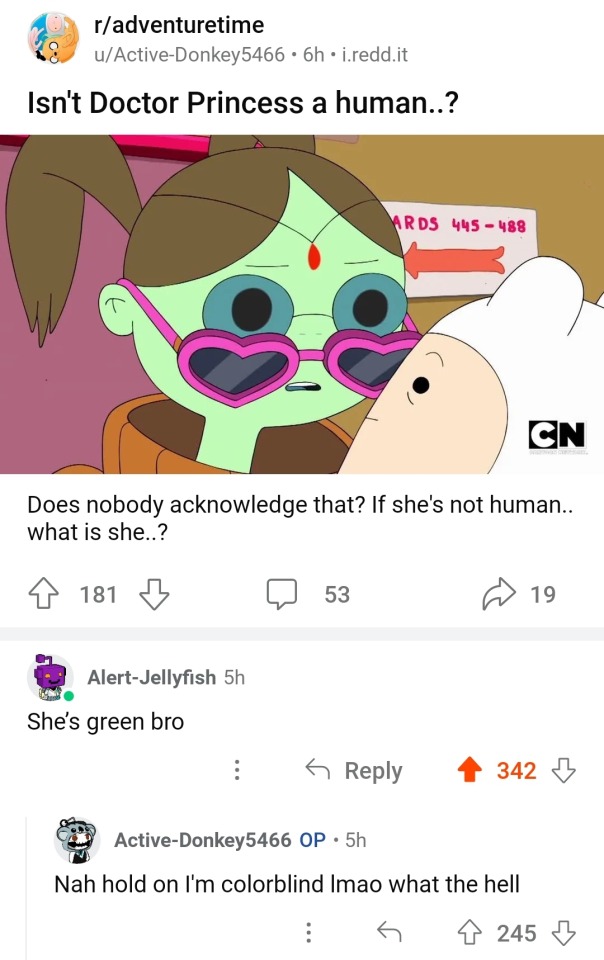#history post
Text

#tumblr memes#meme#memes#history memes#history post#history channel#ancient history#world history#history#funny but true#ancient aliens#leftist memes#leftism#leftist#left wing#leftisim#left wing politics#socialist memes#socialist#communist#political memes#political humor#political posting#true memes#best memes#memesdaily#humor#humour#shitpost#political shitposting
183 notes
·
View notes
Text

Marianne: "Bog! We're going to the bike store!"
944 notes
·
View notes
Text

I finally finished this thing. The sketch of this has been lurking on my PC for way too long. Haven't drawn these guys in ages.
Also sorry for the delay on the Leipzig photos. I got Covid again as soon as I returned and ultimately forgot about them...
#history post#Frederick William III.#Queen Luise#Alexander I.#ship feels#i make artsy stuff sometimes hm#I will sort out the photos as soon as I get to it#there are a lot so I will have to pic the best ones so I don't overwhelm tumblr lol
62 notes
·
View notes
Text




Welcome to New York’s legendary hotel for women, the Barbizon.
Liberated after WWI from home and hearth, women flocked to New York City during the Roaring Twenties. But even as women’s residential hotels became the fashion, the Barbizon stood out; it was designed for young women with artistic aspirations, and included soaring art studios and soundproofed practice rooms. More importantly still, with no men allowed beyond the lobby, the Barbizon signaled respectability, a place where a young woman of a certain class could feel at home.
As the stock market crashed and the Great Depression set in, the clientele changed, though women’s ambitions did not; the Barbizon Hotel became the go-to destination for any young American woman with a dream to be something more. While Sylvia Plath most famously fictionalized her time there in The Bell Jar, the Barbizon was also where Titanic survivor Molly Brown sang her last aria; where Grace Kelly danced topless in the hallways; where Joan Didion got her first taste of Manhattan; and where both Ali MacGraw and Jaclyn Smith found their calling as actresses. It was home to American royalty like Liza Minnelli and Little Edie Beale, who made their way here as they attempted life beyond their famous family homes. Students of the prestigious Katharine Gibbs Secretarial School had three floors to themselves, Eileen Ford used the hotel as a guest house for her youngest models, and Mademoiselle magazine boarded its summer interns there, including a young designer named Betsey Johnson.
x
#barbie#barbizon#barbizon hotel#history#women's history#new york hotel#history post#womens history#new york history
8 notes
·
View notes
Text
Historical Document#2: The Stasi Biography.
//Greetings everyone, this is Mod Sam. I present to you the second history review of the bunch, the Stasi review. Now I'm pretty sure that most of you were expecting this review instead of the Soviet one, given that the Stasi are currently the biggest threat to the blog as of this season, It would make sense to do an analysis on them and what their tactics and operations are. But due to my poor organizational skills, I instead did the Soviet one first, and that review was... disappointing to say the least, but now I understand why it wasn't as successful: it wasn't relevant to the main story yet.
//That's certainly not to say every historical post should be connected to the story, but given the stakes that we have now, it makes perfect sense to talk about them now and explain why they are so dangerous. How I didn't recognize that earlier is beyond me.
//But anyway, I think I did slightly better here in comparison to the last review, where it got way too overcomplicated for anyone to understand, aside from a few aspects. But I think I managed to make it understandable enough for you guys to understand. An added bonus is that the review is shorter, thus you don't have to spend hours reading it, so that's a drastic improvement.
//Given that I've seen a lot of Stasi-related asks during the story, consider this a firsthand survival guide on the Stasi, and what they do exactly firsthand. Consider them a more terrifying version of the KGB and the North Japanese secret police force, at least for now.
//I just want to apologize for the lack of activity on this blog for a while, aside from answering asks and me complaining. I've calmed down since the last time I made that rant, and I eventually realized that I need to take it easy with you guys and not force you because if there is anything people don't like, it's being told what to do, and I feel ashamed that I tried to do that. I hope you all can accept my forgiveness and just no that I meant no ill intentions towards you guys. I was just... so stressed that day and I pretty much lost it.
//But besides that, I'm ready to possibly get back into the story. If all goes to plan, I should have the next story chapter by around Friday or Saturday at the latest. But in the meantime, you have this file to occupy your attention while I start working on the next chapter, so be vigilant for a new chapter coming out soon.
//To close this post off, let me show you the ID card of Vladimir Putin while he was in the Stasi. And before you ask, yes, this is 100% real and accurate, this was actually what he looked like when he was younger. Viewer discretion is advised.

//At the very least, he had some hair, so I'll give him that.
//This shall probably be the last historical post I do for now, as I prefer to continue working on the story since these posts aren't going to really matter to anyone unless we focus on the actual plot itself. I know I just said that before, but I wanted to add more context as to why. Plus, it's pretty much a slog for me to write these long essays in Google Docs since I highly doubt anyone here reads a Google Doc for a review. Still, though, I hope you enjoyed these reviews as that's all you're going to get untill the end of this arc or even the season, it's up to my own volition on how I shall conduct this type of strategy.
//This is Mod Sam from A Tale Never Told, signing out for now. Have a great rest of the day everyone ^^.
2 notes
·
View notes
Text
I was once reading a Japanese biography written about Metternich.
In that book, there was also a little bit about Schwarzenberg, who was Metternich's "confidant".
I will try to find out more about this relationship………🤔
18 notes
·
View notes
Text

Can you tell this book was written by an Englishman in 1954
5 notes
·
View notes
Text
Supressed Colors

RURI: “Oh, Hi Zarc.”
YUYA: “Just Yuya today. What’s with the cube?”
RURI: “I don’t know. Sora found it.”
YUYA: “In the house?”
RURI: “Yup. It is blue.”

RURI: “One of the supressed colors. His color, like the sky. The sky has his name, but not the other way around. Because he exists, that color must, as well, exist. Do you believe it? Blue and grey?“
YUYA & YURI: “We have to.“
RURI: “You two are cute. Hhmmph. ... ... ! Snow!”
YUYA: “Yeah. Let’s go inside.”
RURI: “Sure! I hate snow!”
1 note
·
View note
Text

84K notes
·
View notes
Text



the ghost of one specific homosexual cowboy regularly possesses Tumblr gays
#bringing back these iconic posts because I can never seem to find them or be able to reblog them#cowboy#cowboys#lgbtqia#tumblr history#rust and ruin blogs#gay cowboys#cowboy au#Wild West#westerns#these are some of my favourite things
111K notes
·
View notes
Text

#free palestine#freepalastine🇵🇸#palestine#from the river to the sea palestine will be free#gaza#free gaza#gaza strip#gaza genocide#save gaza#gazaunderattack#stand with gaza#gazaunderfire#israel occupation#i stand with palestine#i stand with gaza#tweet#genocide#ethnic cleansing#history post#history posting#israel#israel is a terrorist state#political#political posting#politics#israel is committing genocide#israel is an apartheid state#israel is evil#israel is a war criminal#israel is the killer!
35 notes
·
View notes
Text
I was meeting a client at a famous museum’s lounge for lunch (fancy, I know) and had an hour to kill afterwards so I joined the first random docent tour I could find. The woman who took us around was a great-grandmother from the Bronx “back when that was nothing to brag about” and she was doing a talk on alternative mediums within art.
What I thought that meant: telling us about unique sculpture materials and paint mixtures.
What that actually meant: an 84yo woman gingerly holding a beautifully beaded and embroidered dress (apparently from Ukraine and at least 200 years old) and, with tears in her eyes, showing how each individual thread was spun by hand and weaved into place on a cottage floor loom, with bright blue silk embroidery thread and hand-blown beads intricately piercing the work of other labor for days upon days, as the labor of a dozen talented people came together to make something so beautiful for a village girl’s wedding day.
What it also meant: in 1948, a young girl lived in a cramped tenement-like third floor apartment in Manhattan, with a father who had just joined them after not having been allowed to escape through Poland with his pregnant wife nine years earlier. She sits in her father’s lap and watches with wide, quiet eyes as her mother’s deft hands fly across fabric with bright blue silk thread (echoing hands from over a century years earlier). Thread that her mother had salvaged from white embroidery scraps at the tailor’s shop where she worked and spent the last few days carefully dying in the kitchen sink and drying on the roof.
The dress is in the traditional Hungarian fashion and is folded across her mother’s lap: her mother doesn’t had a pattern, but she doesn’t need one to make her daughter’s dress for the fifth grade dance. The dress would end up differing significantly from the pure white, petticoated first communion dresses worn by her daughter’s majority-Catholic classmates, but the young girl would love it all the more for its uniqueness and bright blue thread.
And now, that same young girl (and maybe also the villager from 19th century Ukraine) stands in front of us, trying not to clutch the old fabric too hard as her voice shakes with the emotion of all the love and humanity that is poured into the labor of art. The village girl and the girl in the Bronx were very different people: different centuries, different religions, different ages, and different continents. But the love in the stitches and beads on their dresses was the same. And she tells us that when we look at the labor of art, we don’t just see the work to create that piece - we see the labor of our own creations and the creations of others for us, and the value in something so seemingly frivolous.
But, maybe more importantly, she says that we only admire this piece in a museum because it happened to survive the love of the wearer and those who owned it afterwards, but there have been quite literally billions of small, quiet works of art in billions of small, quiet homes all over the world, for millennia. That your grandmother’s quilt is used as a picnic blanket just as Van Gogh’s works hung in his poor friends’ hallways. That your father’s hand-painted model plane sets are displayed in your parents’ livingroom as Grecian vases are displayed in museums. That your older sister’s engineering drawings in a steady, fine-lined hand are akin to Da Vinci’s scribbles of flying machines.
I don’t think there’s any dramatic conclusions to be drawn from these thoughts - they’ve been echoed by thousands of other people across the centuries. However, if you ever feel bad for spending all of your time sewing, knitting, drawing, building lego sets, or whatever else - especially if you feel like you have to somehow monetize or show off your work online to justify your labor - please know that there’s an 84yo museum docent in the Bronx who would cry simply at the thought of you spending so much effort to quietly create something that’s beautiful to you.
#shut up e#long post#Saturday thoughts#this has been in my drafts for a week haha#also this is the heart of why AI art feels so wrong#forget the discussion of copyright and theft etc - even if models were only trained on public domain they would still feel very wrong#because they’re not art. art is the labor of creation#even commercial art and art commissioned by the popes and kings of history: there is humanity in the labor of it#unrelated: I did not know living in the Bronx was now something to brag about. How the fuck do y’all New Yorkers afford this city???
25K notes
·
View notes
Text

It's spoopy time
#history post#history meme#Napoleonic Wars#Queen Luise#Frederick William III.#Alexander I.#i make artsy stuff sometimes hm#sorry for lack of uploads work is h´really knocking the wind out of me lately#too lazy to add shading#* throws this on the ground like breadcrumbs for pigeons *
24 notes
·
View notes
Text
a concerning amount of witchblr will be like "um actually new years was stolen by europeans from the ancient god scroobus mcdoobus" and then you actually try to research scroobus mcdoobus and it turns out he was invented in the 1940s by a conspiracy theorist who powdered every meal with ketamine and thinks that queer people are reincarnated fish
#brightts ramblings#BEFORE I GET ATTACKED: THIS IS NOT AN ANTI-WITCH OR ANTI-PAGAN POST#im just literally begging witchblr and paganblr(?) to study history from proper sources#so you don't accidentally end up repeating misinfo or even outright bigoted info without realizing#you are not immune to propaganda!#this post is specifically ab new agey stuff like starseeds#but a lot of other stuff fits into this as well ie 'blessed be'#for further context i am not a witch or pagan myself but i DO study the occult/occult history#religion#spirituality#history
27K notes
·
View notes
Text
The Soviet Union: The Regime That Changed History.
// Greetings, everyone. Mod Sam here, and I'm here with the official USSR review. My wholehearted apologies for taking this long to post it here and for making the analysis so long, but I finally managed after a few days, to finish the progress and submit to you all the final product of the review. I already posted the link to it in the description above, so feel free to check it out!.
// I honestly put a lot of work and effort into making this review an in-depth dive into the machinations of the Soviet Union itself, and how it works. I had to dig a rather massive deep dive into this rabbit hole, and I hope the amount of hours I wasted was worth my time and effort. That, and it was nice to talk about something that I'm passionate about :).
//Given that the Soviets are the quintessential main antagonists in this blog, It makes sense as to why I have to mention them now, because they certainly play a central role in the story and narrative, and I hope I explained why.
//As for why I did it all on a Google Doc, my first response is that it's long (20 pages in fact) and the second reason as to why is because given the state of Tumblr and how it has a certain limit on the functions you can do on the website, I figured it would be best if I did it on Google Docs since I would honestly have more flexibility and enough space to write the essay because looking at it, I certainly wrote a lot. I think I will mostly stick to Google Docs when it comes to making long, in-depth, analysis reviews of a certain topic, and I'll stick to Tumblr when it comes to making top 10s or short reviews on something I find particularly interesting.
//But either way, I hope you all appreciate the hard effort I put into making this, and hopefully, it made things more understandable for all of you, so you can understand on what exactly we're dealing with here. This is Mod Sam from A Tale Never Told, signing out. Have a good rest of your evening, everyone ^^ :)
3 notes
·
View notes
Text
pls reblog for sample size etc
follow for more occasional useless polls :)
#medical cw#people looking at my post history my be able to intuit i have adhd#last post got a few responses and i immediately wanted to know this
17K notes
·
View notes